For anyone aspiring to start their own agency, knowing all about agency hierarchy provides a solid foundation for long-term success. Understanding all the inner workings of how they’re organized allows you to meet and exceed business objectives.
By the end of this article, you’ll have gained valuable insights into the ins and outs of agency hierarchy – from the different types to the several factors that affect it.
What is an Agency Hierarchy?
An agency hierarchy refers to a system that groups an agency’s members according to their responsibilities and levels of authority. Along with a holistic view of different departments, an agency hierarchy includes the flow of communication and cultural aspects that make the organization.
What is an Agency Organization Chart?
In simple terms, an agency organization chart is a blueprint of an agency’s hierarchy. The chart illustrates the working relationships and lines of authority within an organization. You’ll find more information about the different agency roles and how each contributes to the bigger picture.
What is the primary benefit of an agency’s hierarchical structure?
A business must be highly organized to prosper, and an agency’s hierarchical structure provides just that. The main advantage boils down to one thing: clarity. An established organizational structure facilitates easy communication and simplifies the decision-making process.
Given the agency titles in any hierarchical structure, responsibilities, and tasks are readily assigned. A hierarchical structure, in essence, acts as a roadmap for any digital agency by providing some form of structure – which is essential to their complex operations.
Understanding all this can be a struggle for many people about to start their own agencies. Finding mentors to guide you in this tedious process can be extremely rewarding.
By collaborating with Prospecting On Demand through our mentorship programs, you can optimize agency hierarchy – a topic we’ll cover later.
Factors That Impact Agency Hierarchy
There are plenty of factors that impact agency hierarchy. Let’s get to know more about them below:
Agency Type
First, ask yourself the question: what type of agency am I looking to establish? Am I more inclined to specialize and narrow down to a single niche, or do I envision myself building an agency that provides a wide range of services?
For instance, if you’re looking to focus on social media marketing, you may require a more specialized social media agency hierarchy with distinct roles dedicated to your services. You’ll have dedicated teams for community management and content creation in this situation.
On the flip side, an agency offering many services, such as paid advertising and search engine optimization (SEO), could require a more extensive hierarchy. That way, each team operates as a single entity or collaborates with other teams, depending on a client’s needs.
Agency Size
One factor affecting hierarchy is the agency size. An agency with over 100 employees will operate differently from one with five, so the size will substantially impact its operations.
A team member may wear multiple digital marketing hats, handling diverse tasks. In contrast, a larger agency can afford more specialized roles, allowing for more in-depth expertise in specific fields.
The size of your agency also impacts client interactions and, in turn, the agency hierarchy. Smaller agencies often have more personalized relationships with their clients. Meanwhile, larger agencies may rely on account managers to optimize communication.
Somewhere down the line, your agency will grow, and new challenges come with growth. Scaling your agency will take work. You’ll have to reassess the size of your teams and restructure them accordingly.
Legal Frameworks
Another thing: consider the regulations that govern your agency’s operations. Data is now regarded as digital gold, and rules on it are tightening. If you want to start your own digital marketing agency, you might have to grapple with data protection regulations.
A shining example of a regulation that can affect your agency hierarchy is the General Data Protection Regulation (GDPR). Although the law is EU-based, many of its principles are adopted worldwide as businesses recognize the importance of data protection.
How does this affect agency hierarchy? Well, it’s pretty simple.
Agencies might have to add a dedicated compliance team to the mix. Each team can consist of data protection officers or even lawyers. They ensure that all business processes align with local and international regulations. If you collect personal data from EU citizens, compliance with this law is a must.
Leadership Style
All agencies are unique, and your leadership style is the steering force. Leadership philosophies shape an agency’s culture – how they interact with each other and establish the lines of authority.
Some leaders prefer a more centralized approach, requiring a more traditional digital agency structure. In contrast, others prefer a decentralized approach for more flexibility and adaptability. You can even try a mix of both!
Whatever floats your boat, a leadership style that empowers your teams and resonates with them can help you thrive in the long run. By allowing teams to communicate openly and collaborate across projects, you prime your agency to shoot for the stars.
Business Strategy
A business strategy is a compass for any marketing agency, but did you know it also has a massive impact on the agency hierarchy? Traditional structures tend to be more specialized compared to less traditional ones. Meanwhile, the latter tends to be more flexible.
We touched on this idea earlier when talking about agency size. Large organizations are likely to have more traditional organizational structures, while smaller ones are more flexible.
Keep in mind that this isn’t always the case for all organizations. Large and established agencies can be more modern, while smaller ones can follow traditional structures. The main point stands: your marketing agency strategy will shape your agency’s structure.
Types of Agency Hierarchy Models
Let’s have a short run-through of the different agency hierarchy models. In this section, we’ll discuss traditional, matrix, and pod organizational structures.
Traditional Organizational Structure
The traditional organizational structure is one that you’ll find in many large organizations like Apple. Well-defined responsibilities and a detailed layout of hierarchical levels characterize this model. Each employee reports to a superior, and the authority flows from the top down.
We have executives at the top of the organizational pyramid, then the other layers of management, followed by the employees. The structure employs vertical communication, which follows a linear, title-based system. The leaders discuss plans and objectives with the managers, who then share them with their teams.
Matrix Organizational Structure
A matrix structure, on the other hand, is more flexible. Big companies like Starbucks and Philips have already implemented this structure. Employees here report to multiple leaders. A stellar example is a copywriter who reports to a project manager and a creative director.
Writers report to the project manager, who ensures the well-timed project completion. At the same time, they report to a creative director for guidance on the creative elements. As you can see, the matrix structure allows employees to collaborate with other teams more freely.
Pod Organizational Structure
The last organizational model we’ll discuss is the pod model, which tech companies like Google and Hubspot use. Quite similar to the matrix structure, the pod structure promotes collaboration and flexibility – but that’s where their similarities end.
“Pods” are formed specifically for each task or client, and employees are assigned based on their expertise. These pods operate with autonomy and can be restructured or dissolved as needed. All team members within a pod have a sense of ownership, which can be a great source of motivation for many employees.
Best Practices for Optimizing Agency Hierarchy
Here are the best practices to optimize agency hierarchy:
- Developing clear roles and responsibilities for each hierarchy level
- Supporting professional growth and continuous learning within agency hierarchies
- Building a positive and inclusive agency culture within the hierarchy
- Monitoring and improving team performance
- Walking a fine line between autonomy and accountability
- Prioritizing employee work-life balance and well-being
Frequently Asked Questions (FAQs)
Find answers to some of the biggest questions on agency hierarchy below.
Where does customer service fit on the org chart?
The team responsible for customer service is often the account management team, composed of account managers and other client-facing roles. The account manager is the bridge between the company and the client, being the point of contact for that specific client’s concerns.
The account team structure is straightforward. Account managers report to an account director, who monitors client relationships. In larger agencies, other roles in this team can include project managers and customer success specialists.
What department in an advertising agency has teams of writers and artists?
While this may vary across agencies, teams of writers and artists belong to the creative department. The team is an umbrella to other sub-teams comprising content and graphic design departments.
The content department is composed of content writers who craft written content, editors who proofread them, and content managers at the helm who oversee the content strategy and workflow.
The hierarchy of job titles in the graphic design department is quite similar. The department comprises graphic artists who create all the visual elements and design managers who oversee the overall design strategy.
These two teams work hand-in-hand to accomplish creative projects, merging the written and visual elements of marketing.
Which advertising agency department is responsible for developing the actual advertisements?
The creative department is responsible for developing the actual advertisements for an agency. The hierarchy of an advertising agency places this department at the forefront of the advertisement development process.
Creative departments differ across agencies. In advertising agencies, they’re made up of creative directors, copywriters, graphic designers, and sometimes a production team, if needed.
Conclusion
Choosing a hierarchical structure suitable for your growing agency is a complex process. Your agency’s needs might differ from Agency X or Agency Y. Factors such as agency type, size, or business strategy impact agency hierarchies.
Whether it’s a traditional, matrix, or pod structure that you choose, optimizing your agency’s structure is a non-negotiable for lasting success. At the end of the day, it’s you who decides. Select and apply a model that suits the goals of your agency. Once achieved, success will come to you.
To assist you in attaining the success you dream of, Prospecting on Demand can kickstart your journey. Our mentorship programs, led by world-class subject matter experts, will walk you through the process of starting your agency. Take the first step and schedule your free assessment here.






